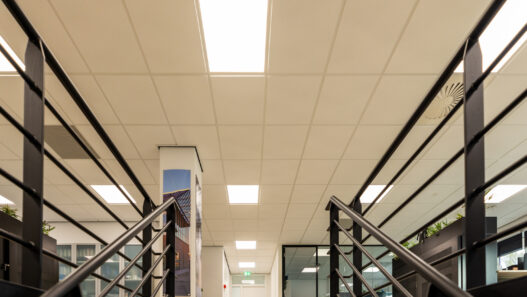BREEAM, or the Building Research Establishment Environmental Assessment Method, is a leading assessment system that evaluates the sustainability of buildings and infrastructure worldwide. Originally developed in the United Kingdom and adapted as BREEAM-NL in the Netherlands, this certification provides property owners and developers with a framework to optimize their buildings for environmental friendliness and operational efficiency.
In today’s real estate market, sustainability has become a necessity rather than an option. Investors and tenants alike increasingly prioritize energy-efficient and eco-friendly buildings. BREEAM offers a transparent method for measuring and comparing the sustainability performance of properties, leading not only to environmental benefits but also to enhanced property value and attractiveness to potential tenants.
The BREEAM certification process assesses buildings across nine key categories related to sustainability. These include energy use, where reducing consumption through efficient installations and designs is prioritized; health and wellbeing, focusing on optimizing natural light, air quality, and thermal comfort for occupants; and water management, which emphasizes minimizing water usage through innovative technologies. Additional categories cover materials, waste management, transport options, land use and ecology, pollution, and management practices, ensuring a comprehensive evaluation of a building’s environmental impact.
BREEAM certification features five performance levels, ranging from Pass to Outstanding, with each level reflecting the building’s performance across the sustainability categories. To achieve these levels, project teams must gather evidence of their building’s compliance, which is assessed by certified BREEAM assessors.
The certification process unfolds in five essential steps. First, project teams define their ambitions by collaborating with BREEAM experts to set sustainability goals. Next, they select the appropriate certification scheme tailored to the building type, whether it’s new construction, renovation, or demolition. The project execution phase involves implementing the necessary sustainability measures during construction, such as energy-efficient installations or the use of circular materials. Following that, teams gather evidence of their sustainable performance using the BREEAM assessment tool. Finally, a certified BREEAM assessor reviews the evidence and grants the corresponding certificate.
For property owners, the benefits of BREEAM certification are significant. Sustainable measures often lead to lower operational costs, as energy and water expenses are reduced. Additionally, BREEAM-certified buildings typically hold higher value due to their energy efficiency and increased appeal to tenants. Tenant satisfaction is also enhanced through healthier indoor environments and improved workplace conditions, fostering a more productive atmosphere. Furthermore, some governments offer tax incentives or grants for sustainable real estate projects, adding another layer of financial benefit.
Practical examples of BREEAM sustainability measures include utilizing heat pumps and thermal energy storage systems to enhance energy performance, implementing rainwater capture systems for water conservation, and installing green roofs or façades to improve insulation while promoting biodiversity. Smart technology can also be integrated to automate lighting and heating systems, further minimizing energy consumption.
Many property owners are now considering combining BREEAM certification with WELL certification, which focuses on the health and wellbeing of building occupants. This dual approach maximizes both sustainability and occupant wellness, offering a comprehensive solution for modern real estate challenges.
In 2024, I became a BREEAM expert to assess the potential BREEAM classification of office buildings during the scouting phase. This expertise allows me to make targeted investments in sustainable improvements that enhance the building’s value. By orienting myself on BREEAM requirements early in the process, I can ensure that all relevant measures are taken, leading to a successful certification journey.
In conclusion, BREEAM certification offers property owners a clear pathway to enhance the sustainability and value of their buildings. By investing in sustainable solutions and striving for BREEAM certification, owners contribute to a better planet while gaining a competitive advantage in the real estate market. This approach not only makes buildings future-proof but also more appealing to investors and tenants who increasingly value sustainable practices.
